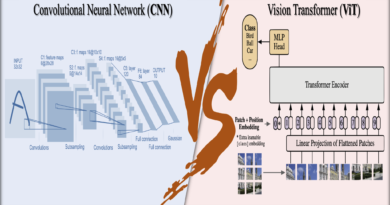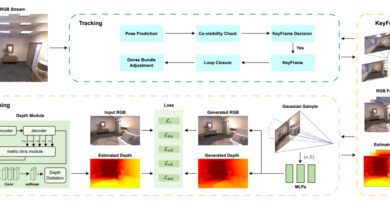Computer Vision and the Buyer’s Journey: Enhancing the Customer Experience through AI
In today’s digital age, businesses are constantly looking for innovative ways to enhance the customer experience and drive sales. One technology that is revolutionizing the way companies interact with their customers is computer vision. By leveraging computer vision, businesses can optimize the buyer’s journey, providing personalized recommendations, and creating a seamless shopping experience. In this article, we will explore how computer vision is transforming the buyer’s journey and its impact on various stages of the customer’s decision-making process.
Understanding the Buyer’s Journey
Before delving into the role of computer vision in the buyer’s journey, let’s briefly understand what the buyer’s journey entails. The buyer’s journey is a framework that describes the process individuals go through when making a purchasing decision. It typically consists of three main stages:
- Awareness Stage: During this stage, customers become aware of a problem or need that they have. They begin to research and gather information to better understand their problem and explore potential solutions.
- Consideration Stage: In this stage, customers have identified their problem and are actively evaluating different alternatives and solutions. They compare products, read reviews, and assess which options best meet their needs.
- Decision Stage: The decision stage is where customers make their final choice and take action to make a purchase. Factors such as pricing, features, and brand reputation influence their final decision.
Now that we have a basic understanding of the buyer’s journey, let’s explore how computer vision can enhance each stage of the journey.
🔥Explore 3500+ AI Tools and 2000+ GPTs at AI Toolhouse
Optimizing the Buyer’s Journey with Computer Vision
1. Awareness Stage:
During the awareness stage, customers are actively seeking information and exploring potential solutions to their problems. Computer vision can play a crucial role in this stage by providing visual search capabilities and personalized product recommendations.
By leveraging computer vision algorithms and image recognition technology, businesses can enable customers to search for products using images instead of traditional keyword-based searches. This allows customers to find exactly what they are looking for, even if they may not have the right words to describe it. Visual search algorithms analyze images and match them to similar products in the company’s inventory, providing customers with accurate and relevant search results [1].
Additionally, computer vision can analyze customer browsing patterns and interests in real-time, providing personalized product recommendations based on individual preferences. By understanding customer preferences, businesses can ensure that the information and content they provide during the awareness stage align with customers’ needs and interests.
2. Consideration Stage:
In the consideration stage, customers have narrowed down their options and are evaluating different products or services. Computer vision can enhance the consideration stage by providing customers with immersive and interactive experiences, allowing them to visualize products and make more informed decisions.
Augmented reality (AR) applications powered by computer vision technology enable customers to virtually try on clothes, visualize furniture in their homes, or see how a new car would look in their driveway. By overlaying virtual objects onto real-world environments, AR applications provide customers with a realistic preview of products, helping them assess how well they meet their requirements and preferences.
Furthermore, computer vision can assist in building recommendation systems that generate personalized recommendations based on the analysis of product images. By extracting features from images using convolutional neural networks (CNNs), businesses can calculate similarity scores between products and offer relevant recommendations that align with customers’ preferences [6].
3. Decision Stage:
The decision stage is where customers make their final choice and take action to make a purchase. Computer vision can influence this stage by providing detailed product information, real-time product availability, and seamless checkout experiences.
Through computer vision, businesses can enable customers to access comprehensive product information, including specifications, features, and customer reviews. High-quality product images and videos can provide customers with a better understanding of the product, helping them make an informed decision.
Additionally, computer vision can enable real-time inventory tracking and product availability updates. By integrating computer vision systems with inventory management systems, businesses can provide accurate information on product availability, preventing customer frustration due to out-of-stock items.
Lastly, computer vision can facilitate seamless checkout experiences by enabling technologies such as facial recognition for secure and frictionless transactions. Customers can complete their purchases quickly and easily, enhancing overall satisfaction and reducing cart abandonment rates.
Challenges and Considerations
While computer vision offers numerous benefits in enhancing the buyer’s journey, there are some challenges and considerations that businesses need to address:
- Data Quality and Diversity: Accessing diverse and high-quality datasets is crucial for training robust computer vision models. Businesses must ensure that their dataset represents a wide range of products and scenarios to achieve accurate and reliable results.
- Scalability: Deploying computer vision models at scale requires robust infrastructure and resource management to handle fluctuating workloads effectively. Businesses need to invest in scalable solutions to meet the demands of growing customer bases.
- Model Interpretability: Enhancing the interpretability of computer vision models is essential for building trust and understanding among users and stakeholders. Businesses should focus on developing explainable AI techniques to provide insights into the decision-making process of computer vision algorithms.
- Security and Privacy: Protecting sensitive data and ensuring compliance with privacy regulations are paramount when deploying computer vision applications. Robust security measures, encryption, and access controls should be implemented to safeguard customer information.
- Bias and Fairness: Mitigating bias and promoting fairness in computer vision models requires proactive strategies to address biases in training data and algorithms. Businesses should strive to develop inclusive and unbiased models that cater to a diverse customer base.
- Maintenance and Updates: Continuous monitoring and maintenance are necessary to address performance degradation and evolving user needs in deployed computer vision models. Regular updates and improvements based on user feedback contribute to the long-term success of computer vision applications.
Conclusion
Computer vision offers tremendous opportunities for businesses to enhance the buyer’s journey and deliver personalized experiences to customers. By leveraging technologies such as visual search, augmented reality, and recommendation systems, businesses can optimize each stage of the buyer’s journey, from awareness to decision-making.
However, businesses must also address challenges related to data quality, scalability, model interpretability, security, bias, and maintenance. By adopting a comprehensive approach that emphasizes collaboration, creativity, and continual development, businesses can overcome these challenges and provide transformative experiences that foster meaningful engagement, trust, and growth.
In a rapidly evolving digital landscape, computer vision is poised to play a crucial role in shaping the future of the buyer’s journey. Businesses that embrace this technology will not only enhance the customer experience but also gain a competitive edge in the dynamic marketplace.




